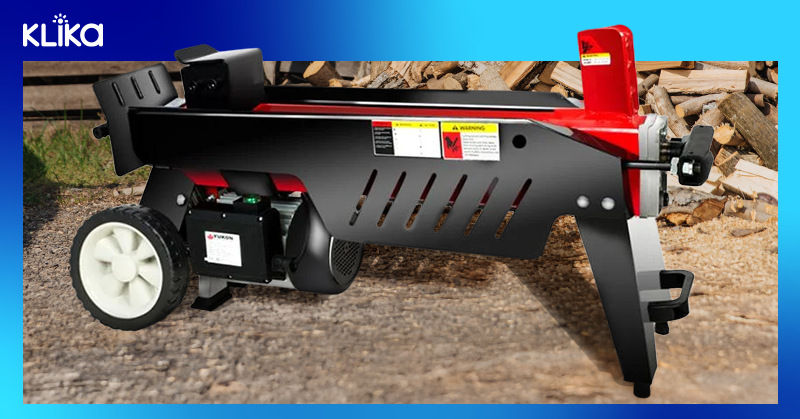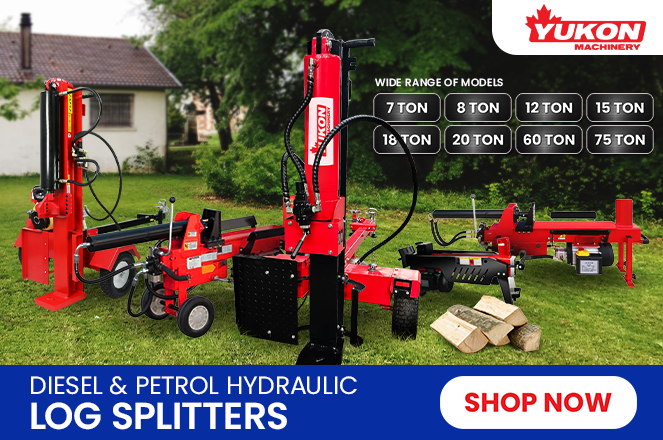What Tonnage of Log Splitter Do I Need?
Unsure what tonnage of log splitter you need? From softwoods to dense hardwoods, here’s how to choose the right tool for efficient wood splitting.

If you’ve ever tried splitting logs by hand, you know it’s no easy feat. That’s where a log splitter comes in, making the job quicker, safer and more efficient. But before you invest in one, there’s an important question to answer: what tonnage do you actually need?
The right tonnage depends on factors like the type of wood, the size of the logs and how often you’ll use the splitter. Let’s break it down so you can make an informed choice.
1. Understanding Log Splitter Tonnage
In simple terms, tonnage refers to the force a log splitter can exert to split a log. Measured in tons, this force determines how efficiently the machine can handle different types of wood.
-
Higher tonnage means more power, making it suitable for larger, tougher logs.
-
Lower tonnage works well for smaller, softer logs.
Think of it like this: trying to split a massive hardwood log with a low-tonnage splitter is like using a butter knife on a steak—it’s just not up to the task.
2. Key Factors to Consider
Wood Type
Not all wood is created equal.
-
Softwoods like pine, fir and cedar are easier to split and require less force.
-
Hardwoods like oak, maple and eucalyptus are denser and demand higher tonnage.
Log Size
The diameter and length of your logs are crucial. Larger, thicker logs will need more splitting power. A general rule of thumb:
-
Logs under 6 inches in diameter: Low tonnage is fine.
-
Logs over 12 inches in diameter: Medium to high tonnage is recommended.
Usage Frequency
-
Occasional Use: If you’re splitting logs for a small home fireplace a few times a year, a lower-tonnage machine will suffice.
-
Frequent or Professional Use: If you’re processing large volumes of wood or working with tough logs regularly, invest in a higher-tonnage splitter.
3. Matching Tonnage to Your Needs
Low Tonnage (5–10 Tons)
Perfect for light-duty work, these splitters are best for:
-
Small logs (under 10 inches in diameter).
-
Softwoods like pine or spruce.
-
Occasional home use for a small fireplace or outdoor firepit.
Medium Tonnage (12–22 Tons)
A versatile option that handles:
-
Medium to large logs (10–16 inches in diameter).
-
Hardwoods like red gum or eucalyptus.
-
Frequent use for homeowners with larger wood piles to manage.
High Tonnage (25+ Tons)
The heavy-duty powerhouse, ideal for:
-
Oversized logs (over 16 inches in diameter).
-
Dense hardwoods, even when wet.
-
Commercial or professional use for high volumes of splitting.
4. Special Considerations
Climate and Wood Condition
-
Wet or green wood is harder to split than seasoned, dry logs. If you’ll be working with fresh-cut logs, consider a higher-tonnage splitter.
-
In Australia, the climate and variety of native hardwoods often call for more powerful machines to handle the challenge.
Future Needs
Even if your current needs seem modest, it’s worth considering whether they might grow. A slightly higher-tonnage splitter can handle today’s tasks and leave room for tougher jobs in the future, making it a smarter long-term investment.
Conclusion
Choosing the right log splitter tonnage is all about matching the machine to your specific needs. From occasional backyard firewood splitting to heavy-duty professional tasks, the right tool ensures efficiency, safety and ease.
Ready to find the perfect log splitter? Explore our range and make wood splitting a breeze!
You May Also Like:
- Log Splitter Buying Guide
- What Are the Benefits of Using a Log Splitter?
- Which is cheaper: Cutting or Buying Firewood?


